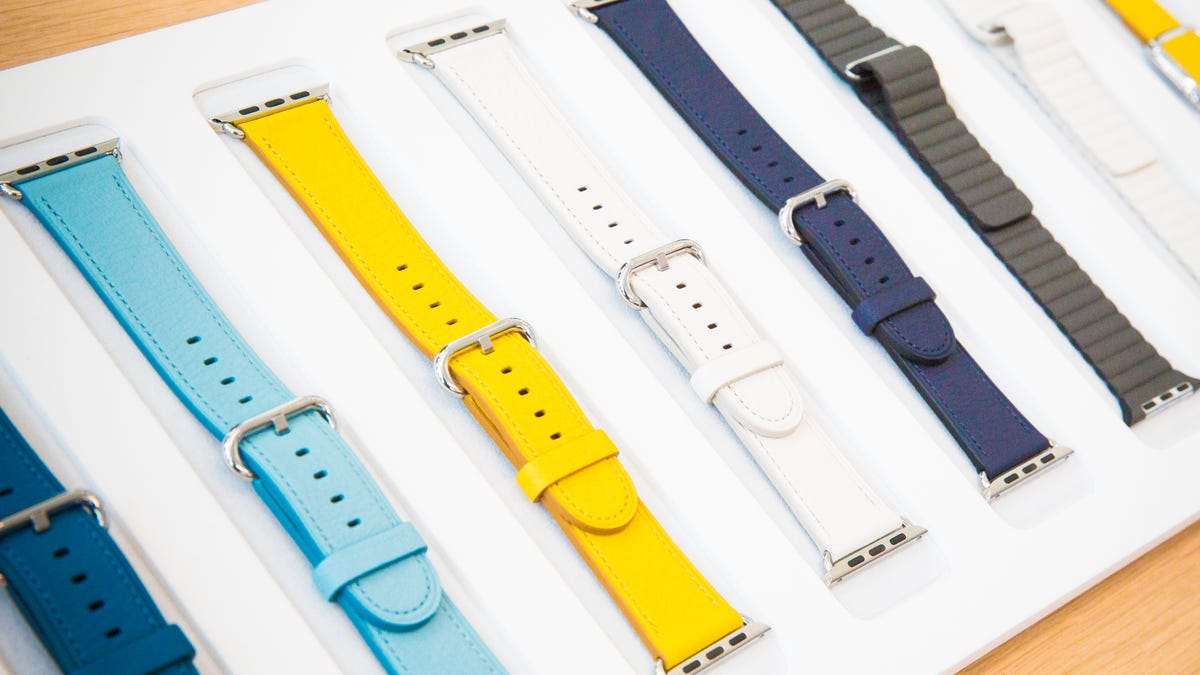Where are the wearables? Apple Watch no-show caps off slow start for smartwatches
Apple joins the ranks of companies failing to introduce a new watch this year, signaling that 2016 may be more about refinement than new products.

If you were expecting Apple to unveil a new smartwatch at Monday's event, you may be feeling a little disappointed today.
What we got instead was a price cut and some new bands for the existing Apple Watch. But Apple isn't the only smartwatch maker that has skipped out on introducing a new timepiece so far in 2016.
Two of the year's biggest tech events, CES in Las Vegas and the Mobile World Congress show in Barcelona, Spain, have come and gone with barely a smartwatch to be seen among the slew of new TVs, phones and home appliances. Fitbit was the rare higher-profile company to show off a new watch at CES, and for its troubles saw its shares fall to their lowest level. At Mobile World Congress, the biggest smartwatch came from Haier, a company better known for making washing machines.
Compare that with 2015, when smartwatches were all the rage. Companies including Samsung, Huawei and LG jumped in with their wearables, and, of course, there was the launch of the Apple Watch.
So what happened? The lack of new smartwatches this year suggests a drought in a business that was just getting off the ground. As evidenced by Apple's announcement of new bands, 2016 may be more about refinement of what we've already got rather than a new generation of wearables. Maybe that could finally help make these products ready for mainstream consumers.
"While it's true that that there haven't been many new smartwatch announcements this year from major manufacturers, there were plenty of significant updates to their existing lineup of devices," said CCS Insight analyst George Jijiashvili.
Smartwatches had a good year in 2015, with the 22 million units shipped exceeding the number of of Swiss watch deliveries for the first time ever. Still, it's unclear whether average consumers want them, or if wearables are still just toys for gadget enthusiasts.
Analysts are bullish. The wearables market is expected to grow by nearly a third to $6.3 billion in 2016, according to Jijiashvili.
So far, smartwatch manufacturers such as Huawei, Samsung and Apple have focused their efforts on making cosmetic changes to materials, colors and finishes. "This is in line with our view that 2016 is the year when wearables start to become items that mainstream consumers might actually want to wear," said Jijiashvili.
Will accessories turn the tide? It's a little something, at least.
"People ... love changing the bands and how it gives the watch an entirely new look," Apple CEO Tim Cook said at Monday's event. "About a third of our Apple Watch wearers regularly change their bands."
Apple still leads
The relative success of the Apple Watch, which in August became the world's biggest wearables company after Fitbit, so far means that everyone is still looking to it to define the market. At the Wearable Technology Show in London last week, barely a panel went by without someone -- rival smartwatch makers included -- alluding to Apple in an almost exclusively positive light.
Related links
- Meet the 4-inch iPhone SE: Like the iPhone 6S, only smaller and cheaper (hands-on)
- Smaller, cheaper iPad Pro throws in a few new surprises (hands-on)
- All the March 21 Apple event coverage
Apple's success is "a sign" of things to come, said Joe Santana, chief executive of smartwatch company Vector and former CEO of Timex, at the show. Adoption has been slow, he acknowledged, but that doesn't mean it will continue to be. "You have a lot of big players making significant investments so they're not going to give up," he said.
As for old-school watchmakers, some like Tag Heuer, Fossil and Guess have caught on to the trend, but the majority are taking a "head-in-the-sand approach to connected devices," said Jijiashvili. "Established watchmakers increasingly need to defend against the threat posed by products from smartwatch makers, which have started to dent sales of traditional watches," he added.
Santana believes that this will change over time. "All the high-end watches will be connected watches," he said. "Everyone is getting involved."
The key will be figuring out what people can do with these smartwatches that will really resonate with them, according to Sam Massih, senior wearables director at sensor company InvenSense, who also spoke at the Wearable Tech Show last week. Manufacturers will have to realize that there is no one-size-fits-all product.
Some watches will be screen-dominated notifications machines, others will be more attractive but capable fitness trackers. "I see the entire product line from the Swiss watch adding a step counter all the way to Apple and Samsung," he said. "There's going to be a product for everybody."
The other trick manufacturers still haven't pulled off is providing applications that give smartwatch wearers feedback on their patterns and allow them to take direct action, Massih said. "Let's actually deliver the services to the user to make them part of their life."

